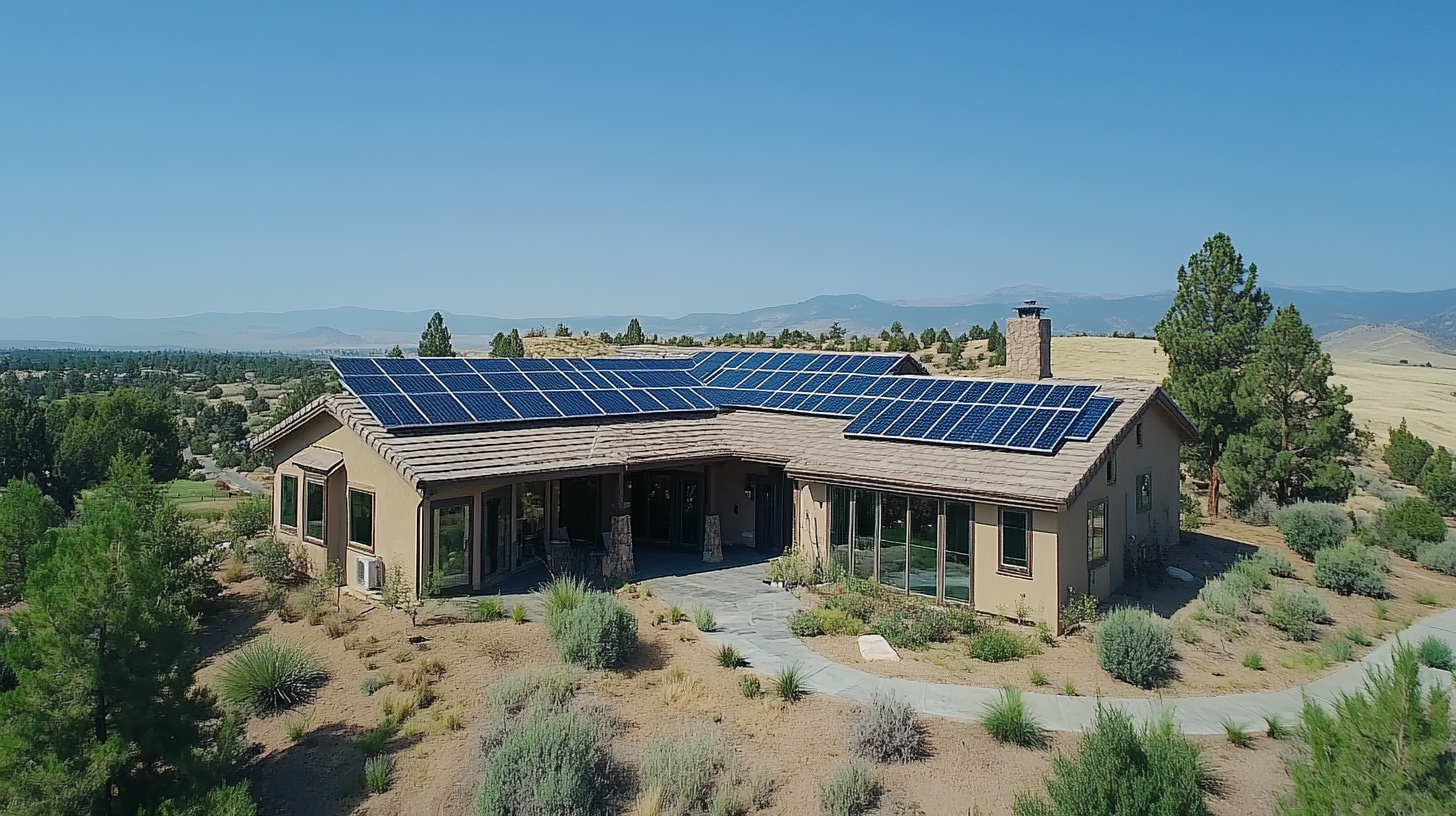Exploring Diverse Options in Solar Energy Power for Global Buyers
The versatility characteristic of solar technology today enhances its attractiveness for global buyers. From photovoltaic (PV) cells to solar thermal systems to innovative storage solutions, there is an ever-brighter future in customization and scalability. According to a report released by Bloomberg New Energy Finance, solar will be generating nearly 30% of the world's electricity by 2030. An opportunity this growth offers to businesses and consumers is to try out an array of solar energy solutions for their energy demands while contributing to a sustainable future.
A global leader in the race for energy markets, Solar Energy Power is emerging as a popular sustainable energy solution for the entire world. As noted by the International Energy Agency (IEA), solar power capacity exceeded 940 gigawatts (GW) in 2021, with a jaw-dropping annual growth rate of 18%. Engineered to capture not just the speed of diffusion of the technology and the cost-effectiveness but also the important role in climate change and greenhouse gas emissions, it is for most new entrants in renewable energy countries to pour funds into infrastructure solutions for solar energy so that the proportion contributions would make up a significant part of their energy mix.
With so many options available in solar technology, I can add more attractions to the international buyer. Photovoltaic (PV) cells, advanced solar thermal systems, as well as innovative storage concepts, create ample room for customization and scaling up. The 2030 vision by Bloomberg New Energy Finance describes that almost 30 percent of global electricity generation will come from solar energy. Such growth opens doors for business and consumer avenues to diversify their solar energy options, not just meeting energy needs but also achieving sustainable futures.

Diverse Types of Solar Energy Technologies for Global Markets
In recent times, the diversity afforded to solar energy technologies was given much attention in the global markets. According to industry reports, it is anticipated that a strong growth of the micro-inverter market will occur, with projections of growth from $4.12 billion in 2024 to $15.4 billion in 2032, which indicates a compound annual growth rate (CAGR) of 17.92%. This boom strongly indicates the increased acceptance of those technologies that maximize solar power generation. The solar generator market is yet another area currently witnessing strong growth, with an expected growth from $5.91 million in 2024 to over $1.018 billion by 2032. The reason for this rise includes the growing demand for portable power sources in places with unreliable electricity. Besides, the automated solar panel cleaning is expected to grow at a faster rate with a projected revenue of more than $1.2 billion in 2034 due to demand for water-efficient and eco-friendly cleaning systems, particularly in arid areas. Another player in expansion is the solar drone market, which had a valuation of $356.3 million in 2024 and is anticipated to grow at a rate of more than 9.2% over the forecast period until 2034. The growing demand for sustainable drone technologies reaffirms a wider shift of possible technology adoption towards renewable energy applications in various sectors. Meanwhile, thin-film solar cells are emerging largely for their lightness and flexibility that best suit portable applications such as solar chargers and wearable technologies. As the efficiency of production improves, so too the price competitiveness of thin-film solar technology, which reflects a vibrant landscape in the innovation of solar energy technologies.

Benefits of Solar Energy Solutions for International Buyers
With the expansion of renewable energy, solar energy stands to become one of the first choices for international buyers seeking sustainable power options. The benefits of solar energy solutions go far beyond being environmentally friendly to encompass economic benefits, energy independence, and innovation. Investing in solar technology can reduce global buyers´ long-term energy costs while ensuring a reliable supply.
Solar energy systems can, of course, improve profitability by lowering operational costs. Predictable pricing for solar power systems, as opposed to traditional fossil fuels, protects companies against the volatile energy markets. This kind of financial security gains significance for companies in areas with high energy costs or frequent fluctuations. The innovations in solar technology have greatly increased the efficiency and long-term performance of solar panels, thereby making it a safer investment for different applications.
Solar installations are also a way to promote energy independence for countries that import fossil fuels. Going solar ensures an energy security framework whereby a country is able to withstand external shocks. Solar energy installations also create jobs in the local sector for installation, maintenance, and manufacturing, supporting local economies. Global buyers in search of options in solar energy are harnessing clean energy, promoting sustainable development, and enhancing the pace of innovation in energy technologies.

Innovative Financing Options for Solar Energy Projects
The wider application of solar energy all over the world is increasingly assured through innovative financing avenues catering for a diverse array of buyers. IRENA reports solar capacity exceeding 800 GW worldwide during 2022, and growth continues, partly owing to the financing techniques' counteracting effect on upfront capital costs, thus making them attractive to developers and investors. One such model is the Pay-As-You-Go (PAYG) scheme, which affords users in emerging markets the opportunity for solar technology access while avoiding the cost of outright ownership. The model has been very useful in regions where obtaining financing in more traditional ways is limited, thereby raising the uptake of solar energy system installations.
The other good financing progress in solar energy is represented by the green bond, which provides funds specifically for environmentally friendly projects. According to a report by BloombergNEF, issuances of the green bond were a record $280 billion in 2021, showing a strong appetite for funding renewable energy projects among the investors. These bonds not only serve to provide cash flow to the developers to start solar projects, but they also provide some reassurance to investors who are able to note some connection to sustainability goals. Such interlinkage between environment and financing is changing the dynamics of solar energy financing.
Furthermore, community solar projects allow any number of individuals or organizations to be investors in solar farms, which are larger-scale solar installations that do not require installing panels on their own property. As indicated in a report by the National Renewable Energy Laboratory (NREL), community solar could lower electricity bills for the participants by 10% to 15%, which makes a strong case for collective investment in renewable energy. This novel way of financing not only opens solar energy access for more people, but it also promotes energy equity, giving more room for socioeconomic inclusion.

Regional Trends in Solar Energy Adoption and Supply
Shedding light on this surface of solar energy adoption, it is quickening the pace across regions due to varying economic, environmental, and political contexts. The State Grid Energy Research Institute recently proved the propitious evolvement of the global energy transition market, showing countries in dire urgent need of diversification through renewable energy sources. This growth curve is also indicative of countries' regional trends in transitioning to solar energy solutions that meet local energy demands and carbon reduction targets.
In Southeast Asia for example, Malaysia has been pro-active in bringing interstate benefits into place under the guise of procuring green electricity, targeting foreign investment into the high-technology sector. This not only enhances the local supply of renewable energy but also fits into the global picture of reducing the reliance on fossil fuels. At the same time, the market in Europe revives German solar manufacturing to show that regional competitiveness buildups are going on in the solar market. Such developments, indeed, are a reflection of the global-upgoing trend in supply chain reshaping owing to geopolitical changes and evolving energy policy.
Furthermore, solar photovoltaic (PV) technologies-such as microinverters in their increasing presence-are indicative of a rapidly evolving market waiting to grow. Improving solar technology will enable the nations of the world to improve their energy security while making the world safer and better tomorrow. The relevance of localized strategies in adopting renewable energy everywhere across the globe gives importance to the different approaches taken to solar energy adoption, as each region handles its own unique set of challenges and opportunities in this transitional age.
Challenges and Solutions in the Global Solar Energy Marketplace
The fast-speeding growth of the global solar energy marketplace is attributed to the rising environmental concerns and the need for sustainable energy solutions. However, this fast-spreading growth is being walked upon with several very critical challenges across the world. One of them is the variation of standards and regulations in different countries. Buyers often experience an endless maze in terms of quality and efficiency of the solar products due to fractured guidelines regarding the mentioned standards. There is often not much trust and reluctance to invest in new technologies because of this.
However, this challenge will be addressed through cooperation between governments, industry stakeholders, and regulatory bodies. The development of a standardized framework will ensure quality and allow increased transparency that protects the end-user as well as bolsters the credentials of solar products in the marketplace. Educational programs, on the other hand, can be initiated to educate future buyers about the technologies involved and the advantages of making them more attractive.
And perhaps most importantly, solar project financing is a big hurdle for most buyers in the world. Innovative financing, such as pay-as-you-go plans and government subsidies, would ease many of the financial complications associated with solar projects and increase the uptake of solar technologies. Working together and through innovation, the global solar energy marketplace will evolve into a more accessible and trusted environment for buyers worldwide.
